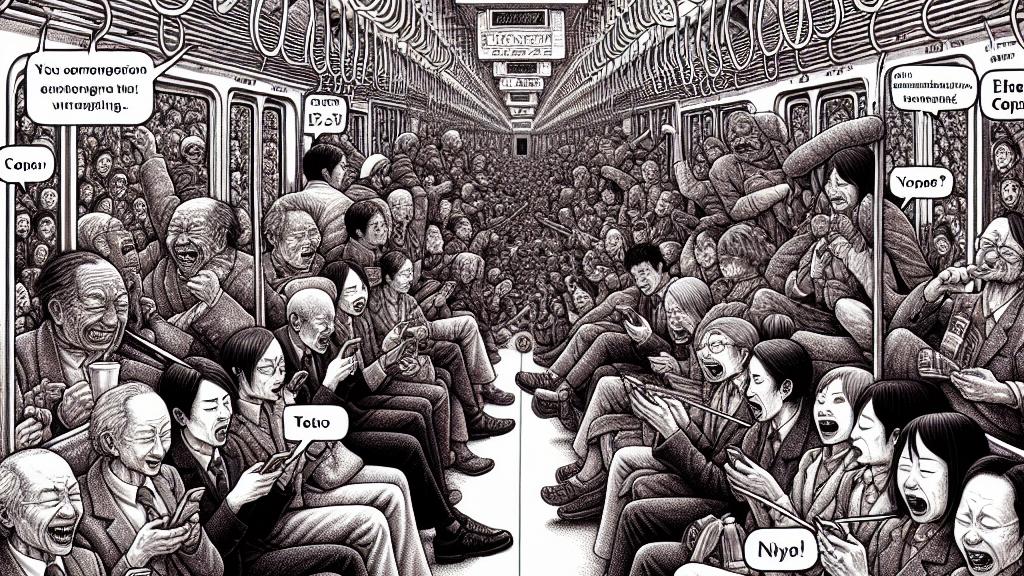Understanding the Generational Gap in Internet Culture
Overview
- An in-depth exploration of the viral 'Yoshinoya Copipe' incident on Japan's Chuo Line.
- A nuanced analysis of how generational differences influence interpretations of internet humor.
- An essential discussion on the cultural literacy required for today's journalists to resonate with diverse audiences.

The Incident on the Chuo Line
A recent event on the Chuo Line, a vital artery of Tokyo's transportation system, showcased how quickly tension can escalate among commuters. The announcement of free access to green cars led to a sudden influx of passengers, creating a frenzied scene within the train. As crowd control measures became essential, Twitter erupted with commentary, much of which humorously referenced the 'Yoshinoya Copipe.' This iconic piece of internet lore originally blossomed within the 2channel community in the early 2000s. Older generations find this reference rich with irony and humor, serving as a delightful reminder of the internet's early days — a time characterized by a shared understanding of such memes. In contrast, younger individuals, lacking this background, often view these references with bewilderment, leading to misunderstandings. This phenomenon demonstrates a pronounced generational divide in cultural literacy, highlighting how quickly humor and language evolve, often leaving younger audiences disconnected from the rich tapestry of internet history.
Decoding the 'Yoshinoya Copipe'
'Yoshinoya Copipe' captures an exaggerated reaction to mundane experiences, depicting a scenario where a family eagerly ventures into a busy Yoshinoya during a promotional discount. The original narrative cleverly details the absurdity of waiting amidst raucous crowds, filled with over-the-top expressions that viewers familiar with these antics can readily appreciate. For instance, consider the vivid imagery of a parent proudly proclaiming their extravagant order amidst the chaos, or the humorously charged commentary lamenting over a crowded dining atmosphere. Such specific examples encapsulate a distinct attitude towards consumer culture, gracefully balancing humor and critique. Yet, contemporary journalists often encounter a unique challenge when referencing this copipe; their attempts to invoke humor can meet blank stares instead of chuckles from readers who don't share the same background. This misalignment necessitates an increased understanding of cultural references that can resonate widely, ultimately enhancing communication between generations.
Bridging the Generational Gap
Addressing the generational gap in internet culture is crucial for modern content creators and journalists. To foster deeper connections, it’s imperative that they not only familiarize themselves with references like the 'Yoshinoya Copipe,' but also masterfully integrate them into relevant narratives that engage their audiences. Imagine writing a piece that intersperses nostalgic phrases with contemporary memes — it creates an intriguing interplay that invites readers of all ages to share in the humor. Such techniques can make articles come alive, allowing readers to experience both the past and present simultaneously. More importantly, engaging with diverse expressions enriches storytelling, transforming static information into dynamic, memorable experiences. By doing so, journalists can cultivate a media landscape that recognizes and values the complexity of modern discourse, allowing for increased understanding and connection across generational and cultural divides. Ultimately, this approach transforms readers from passive consumers into active participants, deepening their appreciation for the layered humor and thoughtfulness underlying internet culture.

Loading...